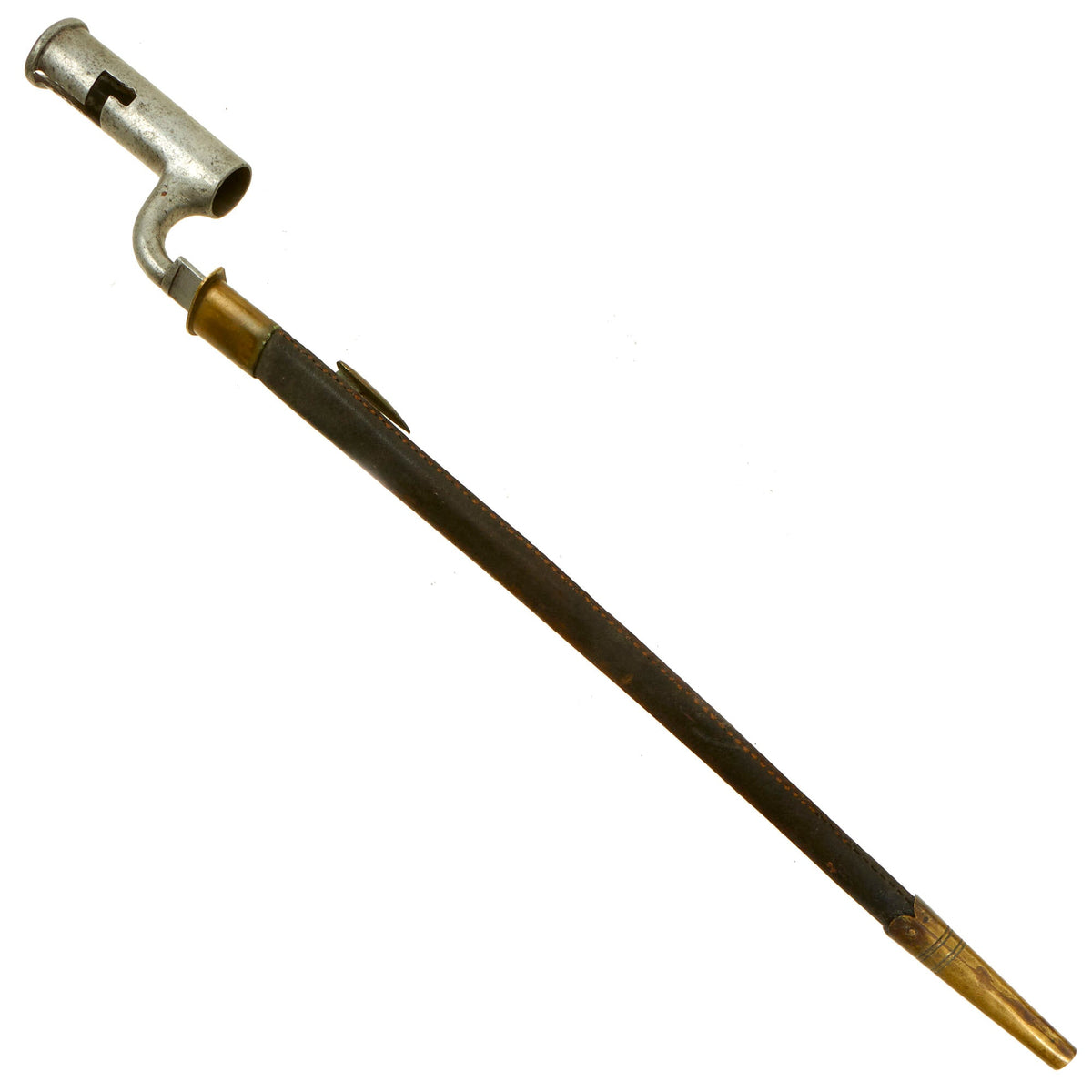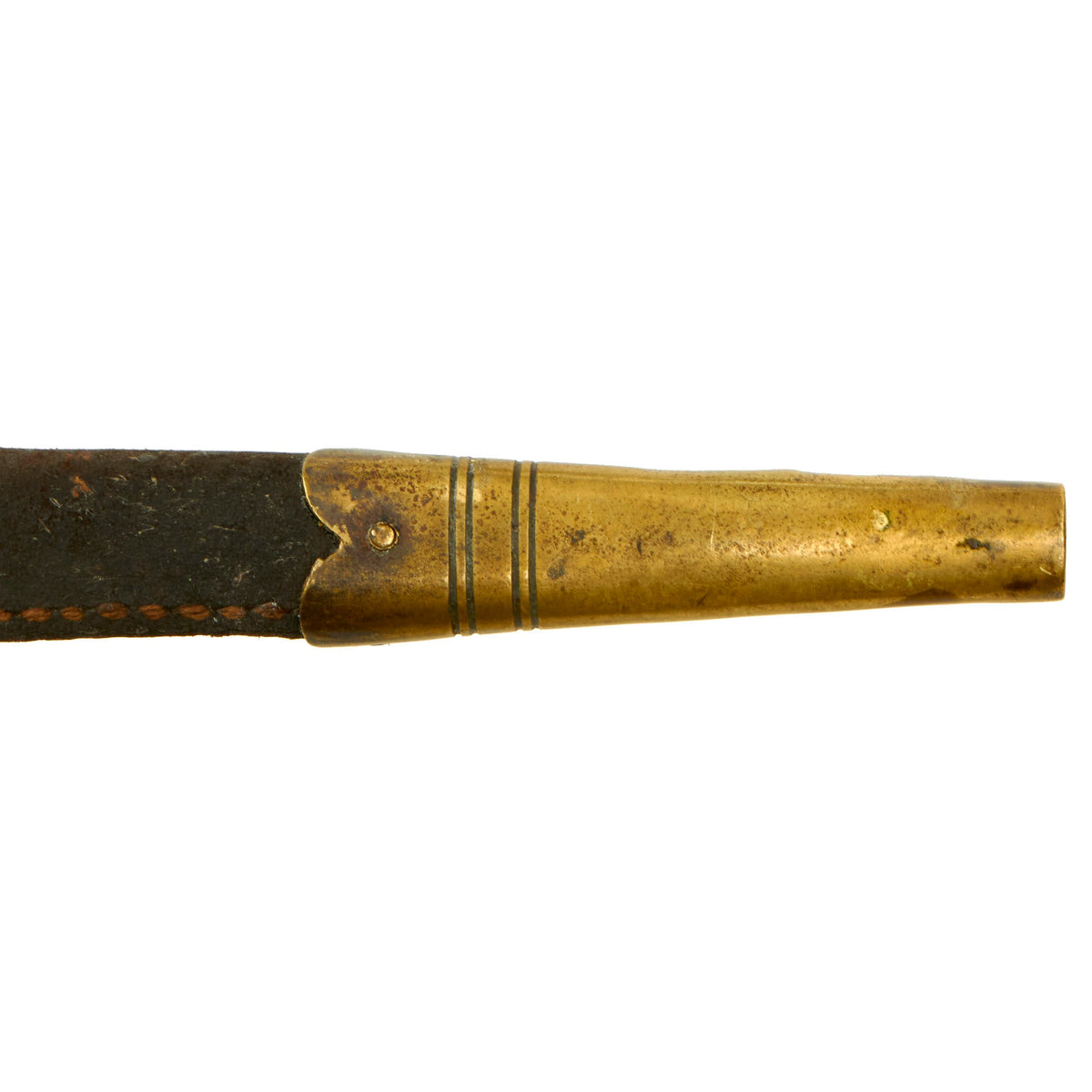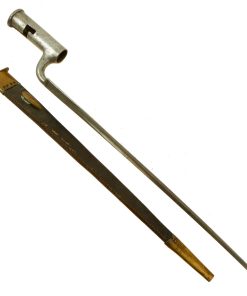Original British Napoleonic Wars / War of 1812 Era India Pattern Brown Bess Bayonet by Osborn With Leather Scabbard Original Items
$ 495,00 $ 148,50
Original Item: Only One Available. Many variations and modifications of the standard pattern musket were created over its long history. The earliest version was the Long Land Pattern of 1722, 62 inches (1,575 mm) long (without bayonet), with a 46-inch (1,168 mm) barrel. It was later found that shortening the barrel did not detract from accuracy but made handling easier, giving rise to the Militia (or Marine) Pattern of 1756 and the Short Land Pattern of 1768, which both had a 42-inch (1,067 mm) barrel. Another version with a 39-inch (991 mm) barrel was first manufactured for the British East India Company, and was eventually adopted by the British Army in 1790 as the India Pattern.
The “India Pattern” musket was the standard infantry musket used from 1797 to 1854 and many variations of the socket bayonet used for these muskets were produced, the main supplier was Osborn, just like this example here. This is the conventional socket bayonet for the India Pattern, having a base ring and three-step mortise in the socket and a triangular blade. The blade has good unsharpened edges and the tip of the blade appears to have been shortened from use.
This example was made by Henry Osborn, who produced India Pattern bayonets from 1796–1808, when he entered into partnership with John Gunby. Osborn’s name was stamped in a distinctive copperplate script on the ricasso with the usual acceptance and proof marks.
The included leather scabbard is in wonderful condition and fits the bayonet very well and is complete with belt hanger.
This is a lovely example of a socket bayonet for the beloved Brown Bess musket. Comes more than ready for further research and display.
Specifications:
Blade Length: 16 3/4″
Socket Length: 4″
Blade Style: Triangular
Overall length: 21 3/8“
Scabbard Length: 17 1/2″
Fast Shipping with Professional Packaging
Thanks to our longstanding association with UPS FedEx DHL, and other major international carriers, we are able to provide a range of shipping options. Our warehouse staff is expertly trained and will wrap your products according to our exact and precise specifications. Prior to shipping, your goods will be thoroughly examined and securely secured. We ship to thousands clients each day across multiple countries. This shows how we're dedicated to be the largest retailer on the internet. Warehouses and distribution centres can be located throughout Europe as well as the USA.
Note: Orders with more than one item will be assigned a processing date depending on the item.
Before shipping before shipping, we'll conduct a thorough inspection of the items you have ordered. Today, the majority of orders will be delivered within 48 hours. The delivery time will be between 3-7 days.
Returns
The stock is dynamic and we cannot completely manage it because multiple stakeholders are involved, including our factory and warehouse. So the actual stock may alter at any time. It's possible that you may not receive your order once the order has been made.
Our policy is valid for a period of 30 days. If you don't receive the product within 30 days, we are not able to issue a refund or an exchange.
You can only return an item if it is unused and in the same state as the day you received it. You must have the item in its original packaging.
Related products
Uncategorized
Band of Brothers ORIGINAL GERMAN WWII Le. F.H. 18 10.5cm ARTILLERY PIECE Original Items
Uncategorized
Uncategorized
Uncategorized
Armoured Fighting Vehicles of the World: AFVs of World War One (Hardcover Book) New Made Items
Uncategorized
Uncategorized
Uncategorized
Uncategorized
Uncategorized
Uncategorized
Uncategorized
Uncategorized
Uncategorized
Uncategorized
Uncategorized
Uncategorized
Uncategorized












































































